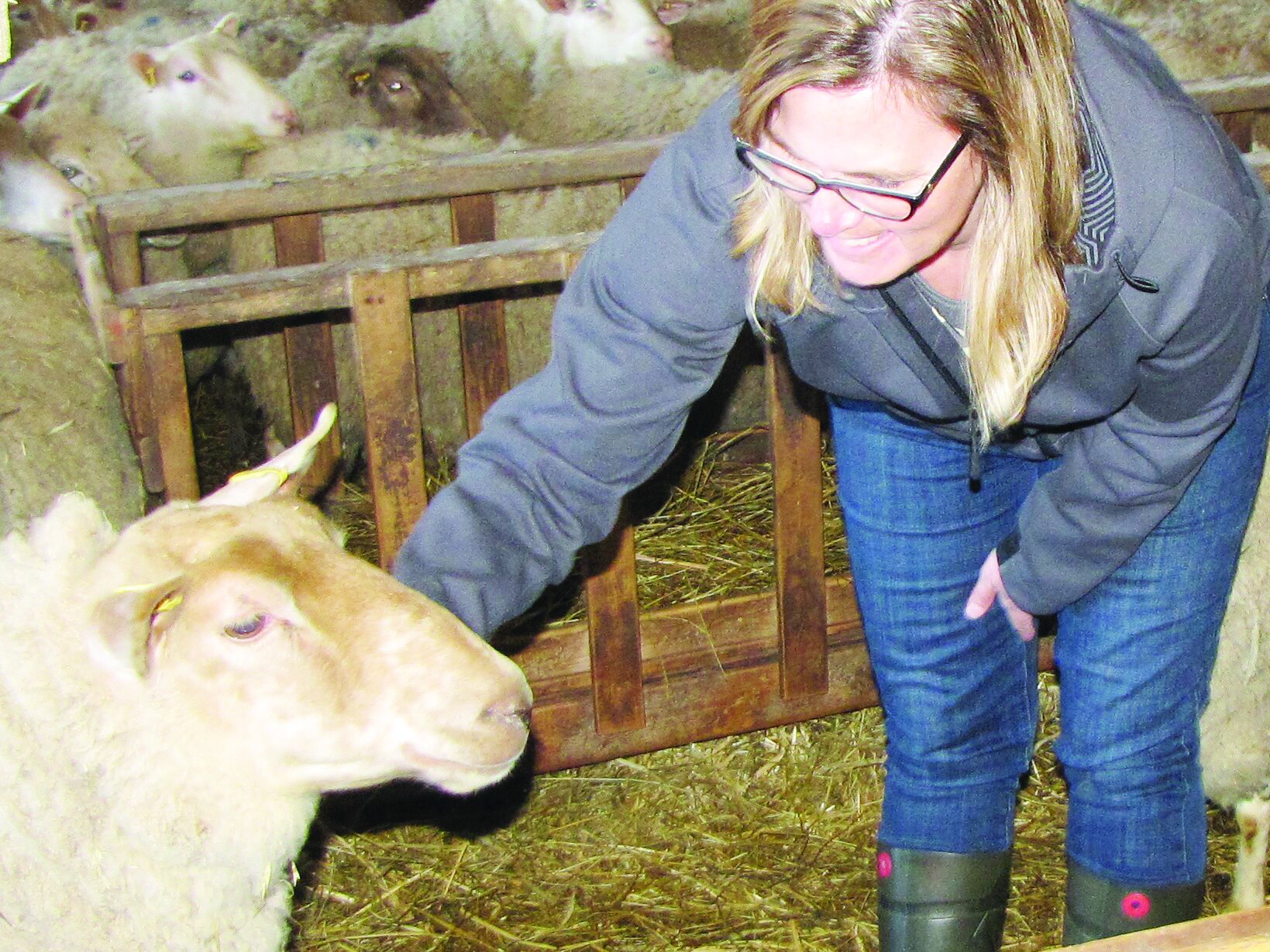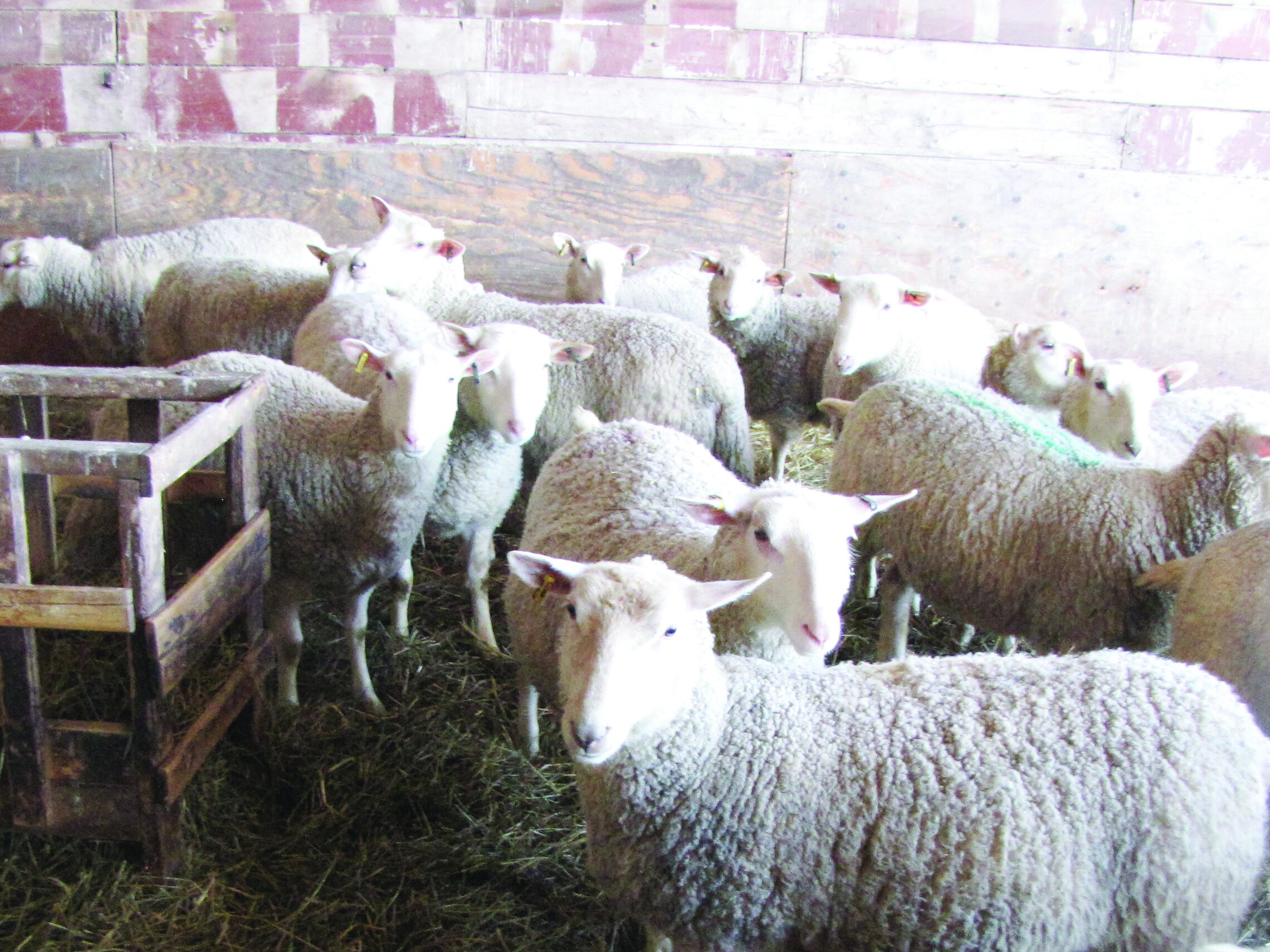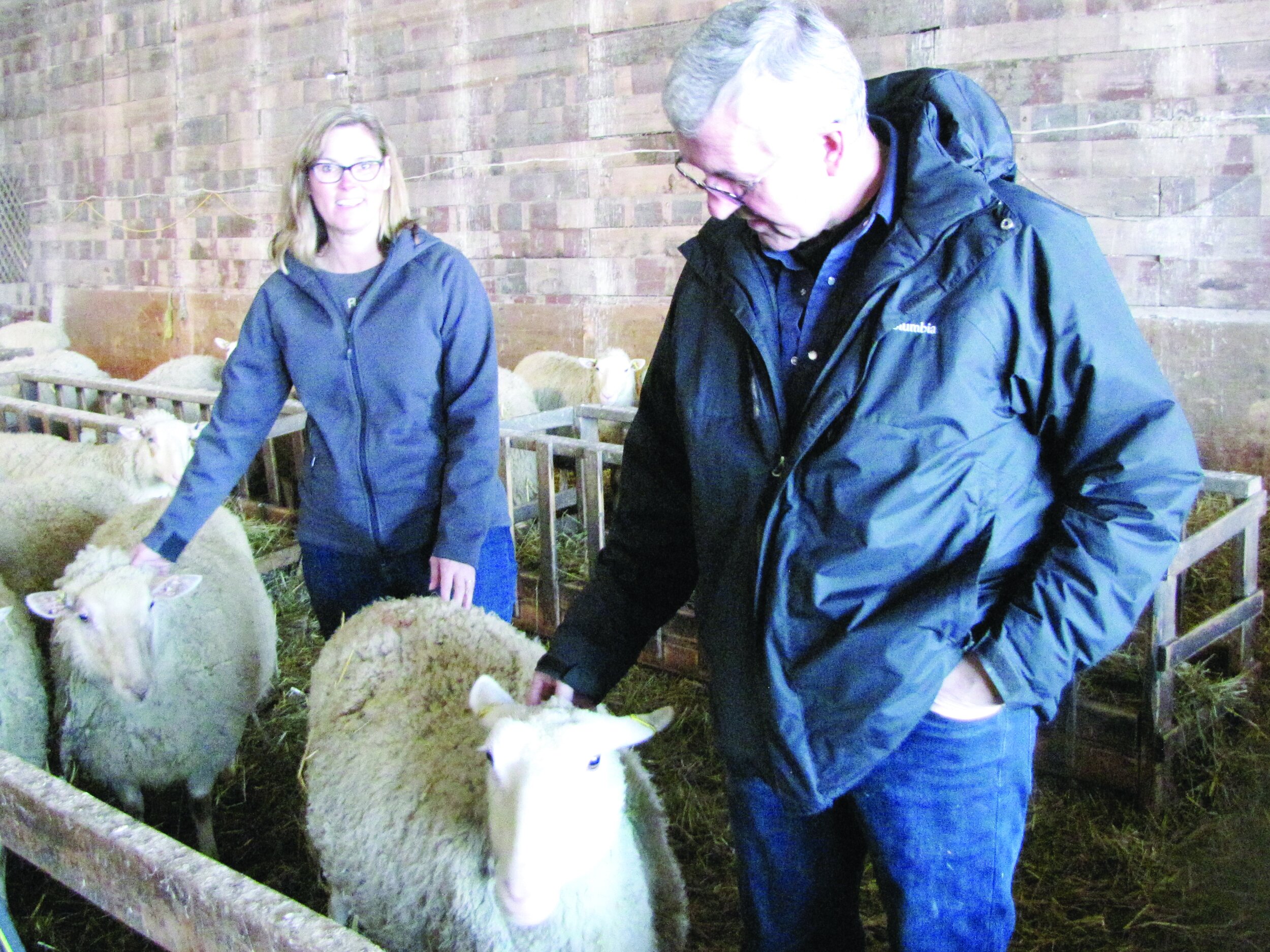Lambing looming on Island sheep farm
/by Kathy Birt
Harry and Vicki Elsinga of Brookwater Farms in Kensington, P.E.I., are a team when it comes to their flock of 200 sheep.
“He gets them out alive and I keep them alive,” said Vicki of the looming lambing period that takes place on this farm every April and May.
With more than 650 newborns every year, the farm is a roller-coaster of activity until the lambs are sold off.
The Brookwater Farms flock is purebred Rideau Arcott and they’re housed as opposed to being on pasture.
“Ninety percent of this breed raised in P.E.I. do not go outside,” said Vicki. “They can run in and out.”
The Elsingas both say that the Rideau Arcotts don’t like the hot sun, wind, or rain.
“They are a confined breed,” said Harry, adding that the breed was developed by the federal agriculture department in the 1950s and 1960s.
With so many sheep to account for, keeping them inside facilitates feeding, breeding, and birthing. Vicki noted that winter is a welcome downtime for the Elsingas. “It’s a nice break until the lambing begins in April,” she said.
GRADUAL GROWTH
Harry was a dairy farmer until 2004 when he sold that operation and then took some time off from farming. “We travelled a lot,” Vicki said of that time.
The sheep farm got off the ground in 2010 with a flock of about 35. Every year, they added to the flock until they reached 200. According to the Elsingas, who have two daughters, they have the only flock on P.E.I. that’s 100 percent registered Rideau Arcott.
“We sell the wool, and the rams are used primarily for meat,” said Harry, adding that they cull out older ewes every year which go for mutton. “Our immigration population has pushed up the demand for lamb, even mutton. The price has gone through the roof.”
Ewe lambs and some ram lambs are sold as breeding stock.
All of the farm’s meat lambs go to the Northumberland Lamb Marketing Co-operative’s abattoir in Bible Hill, N.S.
Northumberland manager Michael Isenor noted in a telephone interview that there’s currently a significant shortage of lamb. “It’s difficult for everybody to get lamb now,” he said, explaining most of the increased demand is in the retail market. “Immigrants want fresh, local lamb.”
He said lamb prices rose by about 25 percent in 2020.
Isenor added that some bigger institutions buy lamb from Australia and New Zealand, but higher-end restaurants want local lamb.
The Brookwater Farms flock is fed hay and silage, with additional feed such as oats, barley, and soy.
“They are fed twice a day,” said Vicki.
CLOSELY MONITORED
The sheep are monitored from the house by no fewer than seven cameras in the barns. “It’s like streamed farming,” said Vicki. The livestream is a valuable asset for monitoring 800 or more sheep and lambs until the lambs go to market in the fall.
The various livestreams are monitored especially closely during lambing season. Whenever the Elsingas see a “water bag” emerging, they rush to the barn.
They said that by instinct, when one sheep is lambing, the others scatter, which makes it easier to work with an individual animal.
Harry noted that lambing is a hectic time. “We take a few hours here and there to rest, but I’ve gone as long as four days without sleep,” he said. “You can just get so tired and cold, you can’t sleep.”
The Elsingas have 180 ewes ready to lamb this spring. The lambing period typically lasts about three weeks in April and May before things settle down.
Most of the ewes can handle nursing two to three lambs. But many give birth to quadruplets and quintuplets. So the Elsingas have milk replacer machines for feeding the lambs that aren’t left with their mothers.
“The lambs on the milk machine do just as well as those on the moms,” said Vicki. “Most multiples will be fed bottled colostrum before they go to the machines.”
The lambs can gain a pound of weight a day and don’t spend long on the milk machine.
“We get them to about 21 days and then take them off the milker,” said Vicki. “The lambs should be 22 to 25 pounds when taken off the milk machine.”
The lambs that stay with their mothers are weaned later. All the lambs are fed fresh silage and creep ration, which is eventually replaced with adult feed.
Vicki explained that she uploads information on the lambs – such as their 50-day and 100-day weights – to the GenOvis genetic improvement program, which helps them decide which lambs to keep and which lambs to sell, either for meat or breeding stock.
They have the same customers coming back each year to buy breeding stock. “Most go to Ontario,” said Harry. “We keep back 20 rams for breeding.”













